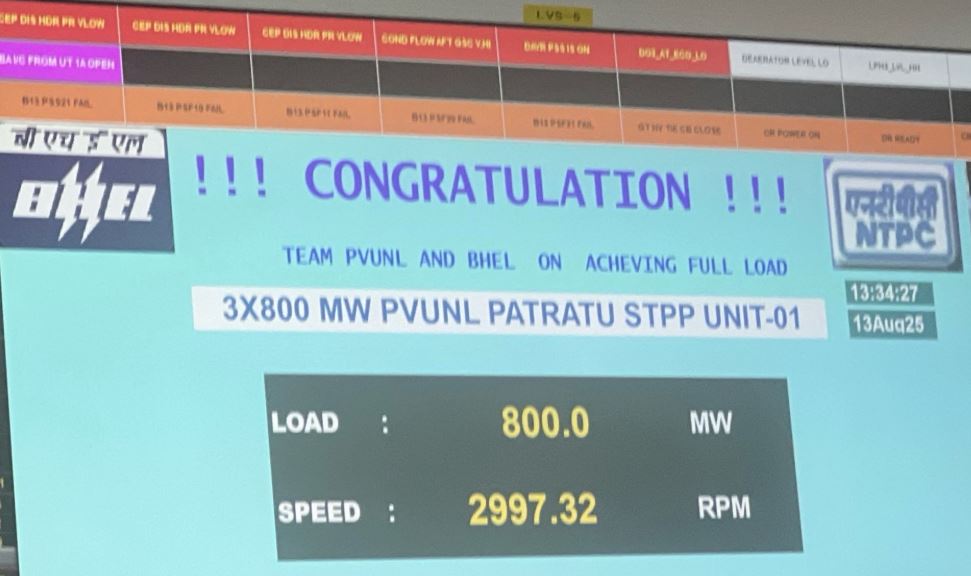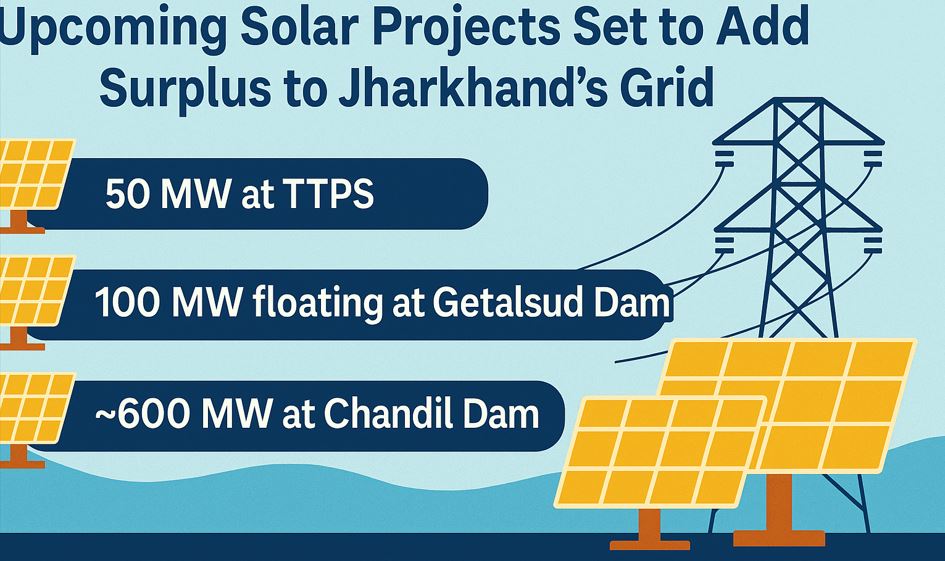Trial generation has begun at the 4000 MW supercritical Patratu Super Thermal Power Project, operated by Patratu Vidyut Utpadan Nigam Ltd (PVUNL), a joint venture between NTPC and JBVNL. PVUNL is currently conducting daily performance tests on Unit-1, progressively ramping load and validating systems ahead of commercial operations. According to officials, the first unit has been cycling between 300 MW and 500 MW during routine trials. Earlier this week, the unit was successfully taken up to 800 MW full load before being eased back to the 300 to 500 MW band for further testing and grid synchronization checks. Trial power is being evacuated from the Katiya (Patratu) grid to Hatia-2, Budhmu, Lalpania and PGCIL nodes, with onward feed from Lalpania to Govindpur and parts of Santhal Pargana.
The Power Plant will Strengthen Jharkhand’s Energy Self-Reliance
The 4,000 MW Patratu Super Thermal Power Project, based on supercritical technology, will be implemented in two phases, with Phase-I comprising three 800 MW units (2400 MW) slated for commissioning this year, and the remaining 1600 MW to follow. Under the allocation plan, Jharkhand will receive 80% of Phase-I output, that will be around 1960 MW, significantly reducing dependence on central pool supply. With current state demand averaging 2000 MW in normal hours and peaking at 2400 MW, the integration of Patratu’s capacity is expected to enhance supply stability and meet peak-hour needs.

Also Read: Ashok Sengal Took Charge as the New CEO of PVUNL
PVUNL CEO Confirms Unit-1 Power Generation Soon
Senior NTPC leaders including CMD Gurdeep Singh, Director (Fuel) Shivam Srivastava, and Director (HR) A. K. Jadli recently reviewed progress at Patratu. The CEO of PVUNL, A. K. Sehgal indicated that 800 MW generation from Unit-1 and commercial loading would commence soon, adding that the project is a milestone toward Jharkhand’s energy self-reliance.
Upcoming Solar Projects Set to Add Surplus to Jharkhand’s Grid
The state’s power demand currently includes TVNL (160 MW), Sikidri Hydel (60 MW in monsoon), Modern (182 MW), South Eastern Railway (67 MW), and Inland Power (30 MW), supplemented by central allocations from DVC (580 MW) and NTPC (1017 MW). Complementing this, upcoming solar projects of 50 MW at TTPS, 100 MW floating at Getalsud Dam, and 600 MW at Chandil Dam alongside TVNL expansion, aim to create surplus power and diversify sources.

Join the WhatsApp Group of Business Jharkhand to Stay tuned for all the latest updates of industrial-political developments in Jharkhand.


